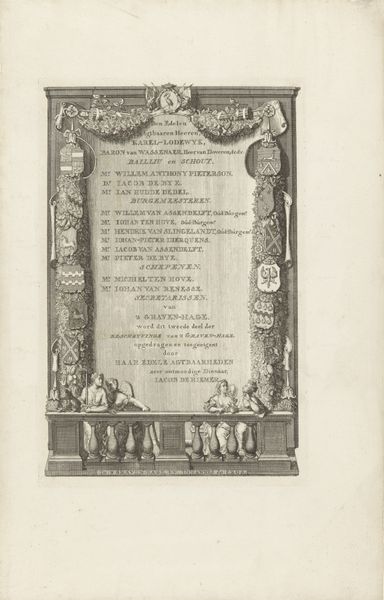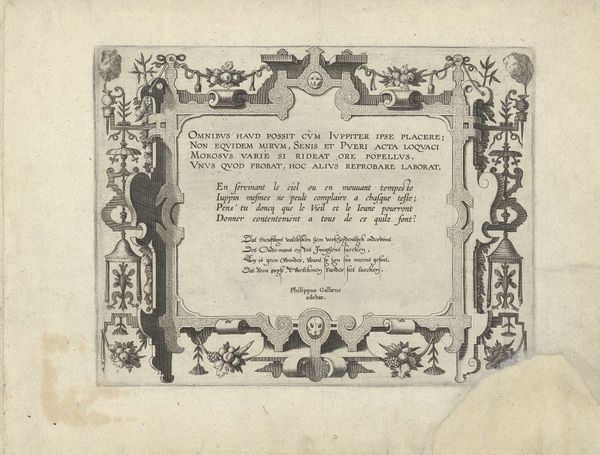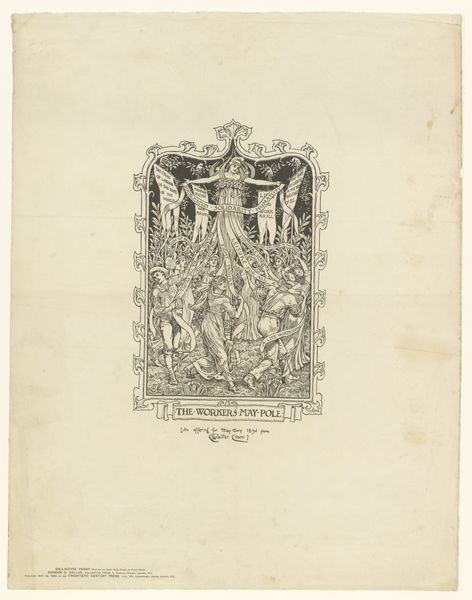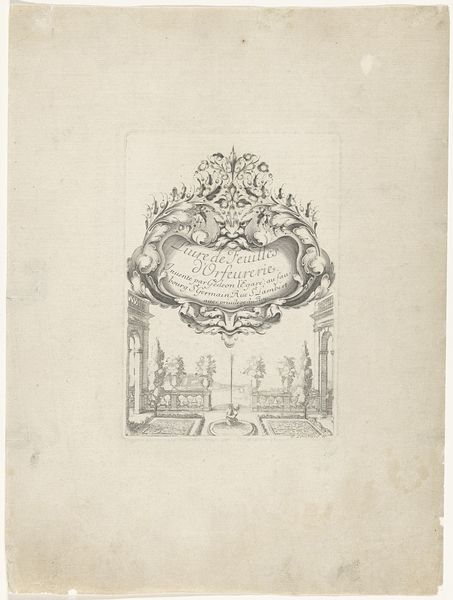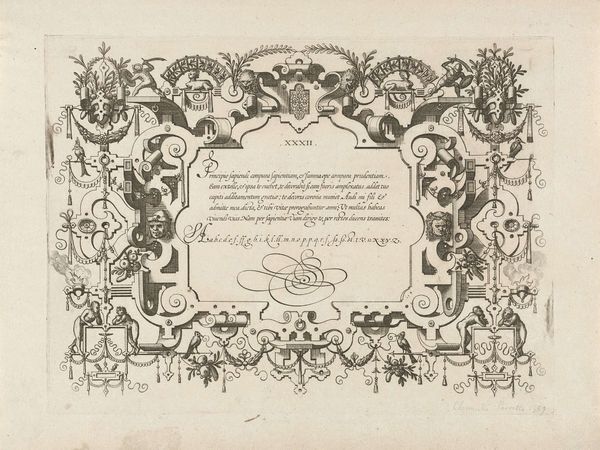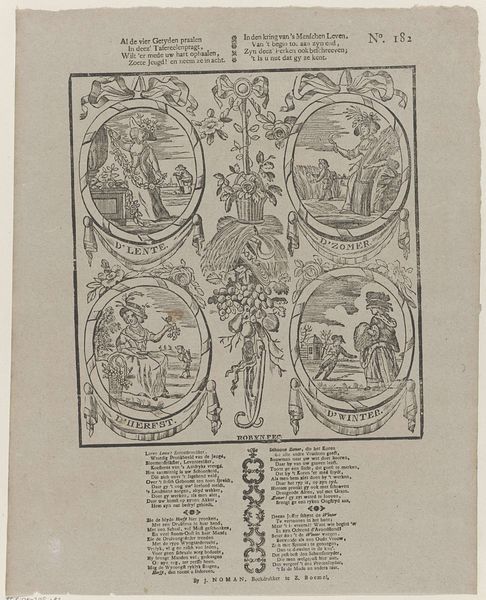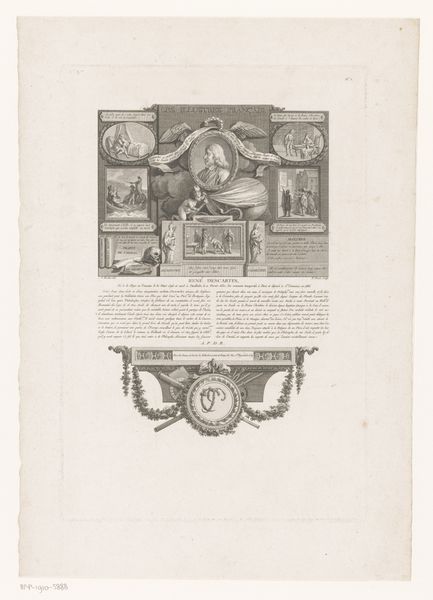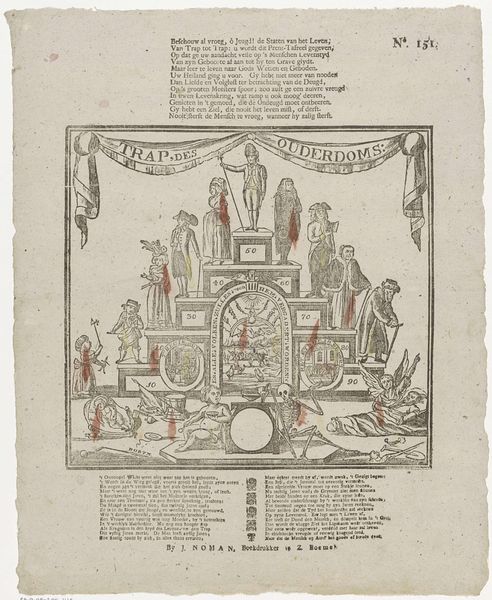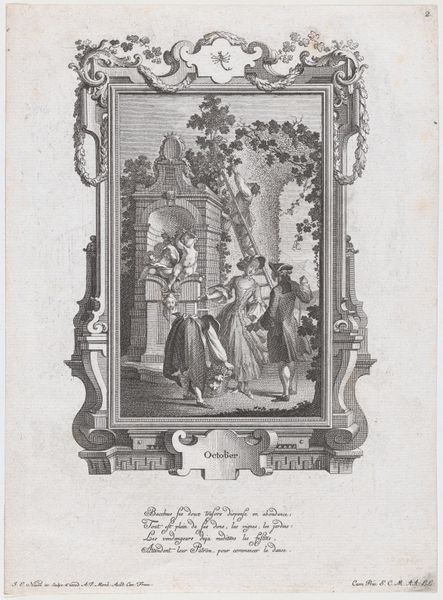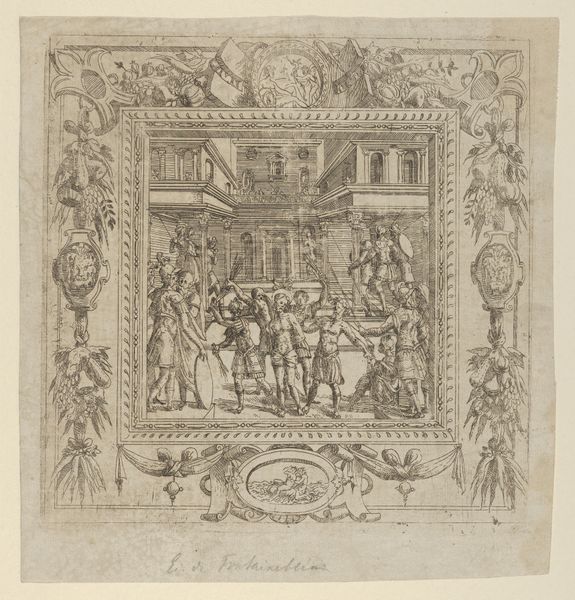
Daar ouders sterven de kind'ren treuren, gelyk men daaglyks ziet gebeuren 1761 - 1804
0:00
0:00
Dimensions: height 400 mm, width 305 mm
Copyright: Rijks Museum: Open Domain
Curator: This print, whose Dutch title translates to "Where Parents Die, the Children Mourn, As Happens Daily," was created sometime between 1761 and 1804 by Erven de Weduwe Jacobus van Egmont. It's currently held at the Rijksmuseum. Editor: The scene has such a solemn, almost oppressive feel. The dark ink of the engraving emphasizes the heavy drapery of the deathbed and the grief etched on the faces of the figures surrounding it. You can almost feel the weight of their mourning. Curator: Absolutely. This engraving served as a moralizing genre scene, distributed widely to convey specific social and religious values around death and family. Notice how the elaborate, decorative border emphasizes the emotional drama unfolding within the central image. Editor: For me, that decorative element feels integral. Consider the labor involved in creating not only the central narrative scene but the meticulously rendered ornamentation. It speaks to a culture where even representations of sorrow were elevated through craft and careful production for mass consumption. The printmaking process itself is crucial to understanding its accessibility and function. Curator: The visual language of Baroque art is fully on display here. Look at the careful balance, the composition guiding our eye towards the dying mother as the emotional and spiritual focal point. Editor: It’s fascinating to think about the distribution of this print. Meant for everyday consumption, these images shaped a viewer's understanding of death, domesticity, and the expected performances of grief, particularly within the sphere of family. I also find the lines of text inscribed beneath the illustration compelling; this incorporation of literary narrative suggests the printmakers regarded literacy to be relatively ubiquitous. Curator: It does add a layer of moral instruction. The image serves not just to depict a scene, but to provide a model of appropriate behavior for the viewer, solidifying the connection between death and proper mourning in society. Editor: The combined processes, materials and its resulting function highlight its accessibility; an approach that encouraged wide circulation and influence across the Dutch Republic. It prompts consideration as to who this artwork reached, and ultimately, how it influenced contemporary life. Curator: Precisely, focusing on the public function of such art helps reveal much about social norms during that period. Editor: An insight I think, to this day, allows us to examine themes of family, mourning, and even consumption to a more expansive public.
Comments
No comments
Be the first to comment and join the conversation on the ultimate creative platform.
